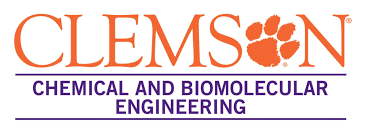Information
-
Document No.
-
Audit Title
-
Department
-
Department Chair
-
Department Chair Email
-
Conducted on
-
Prepared by
General Information
-
Lab Room Number
-
Conducted with
ADMINISTRATIVE
-
A copy of the MVCC Hazard Communication Program is available for all employees
-
All employees have completed the OSHA required Hazard Communication training
-
MSDS/SDS are available and clearly located
-
Updated SDS's are submitted to the appropriate department contact
-
Chemical inventory list is updated/submitted annually to the Safety Coordinator
HOUSEKEEPING
-
General orderliness
-
Aisles and exits are kept clear and accessible
-
Heavy items are stored on lower shelves
-
No storage within 18 in of sprinkler heads
-
Work areas are illuminated
-
Hot surfaces and equipment are labeled
-
Sink and counters are kept clean and uncluttered
General Safety
-
Emergency Procedures for Chemical Spill and cleans up are posted
-
Emergency Contact information is up-to-date and posted
-
Safety Showers and eyewash stations are accessible and working
-
Fire alarm pull stations and fire extinguishers are accessible (3 ft clearance)
-
Emergency shutoffs are labeled and accessible
-
PPE is available and used when required
-
No tripping/slipping hazards
-
Emergency lighting is working
-
Clothing and footwear are appropriate for the Lab
-
No food or beverages are present
-
All injuries or exposures are being reported per College Policy
-
All employees and student workers have completed the necessary training and records are updated/maintained
-
Only authorized personnel are allowed in the Lab Prep Area
-
Labs/Prep areas are secured when not in use
CHEMICAL STORAGE
-
All containers are properly labeled (primary/secondary/waste)
-
All chemical containers are in good condition
-
Non-compatible materials are stored separately
-
Containers are kept closed to prevent spills/leaks
-
Corrosives are stored below eye level
-
Chemicals are not being stored on bench tops, on carts, or on the floor
-
Refrigerators are organized and properly labeled, i.e. No Food
-
Flammable liquid storage is minimized (<10 gallons outside of a flammable storage cabinet)
-
No open flames or sources of ignition near flammable storage or usage area
FUME HOODS
-
Fume hoods are clear of obstruction in front and behind
-
Fume hoods are in good working condition
-
Fume hood sashes are closed when not in use
-
Safe operating sash height is marked
-
Sash and interior lighting are working properly
-
Fume hoods are routinely inspected
-
Snap inspection tag
-
Chemical/equipment storage in fume hoods are strictly limited
-
If chemicals or hazardous substances are stored in the hood, the fan is on with the sash lowered
-
Chemicals/equipment stored in the hood are at least 6 in from the sash
HAZARDOUS WASTE
-
Containers are clearly marked as "Hazardous Waste"
-
Waste is stored in designated area which is posted
-
Waste is stored in secondary containment
-
Waste is regularly removed from the lab and staff know the procedure for arranging removal
ELECTRICAL
-
Electric cords are in good condition and plugged in
-
Cover plates for outlets and switches are in place and in good condition
-
Circuit Breaker panels are accessible and not obstructed by 30 inches
-
Outlet strips are equipped with overload protection
-
Extension cords are restricted
-
Equipment is properly grounded
-
GFCI outlets are installed where required
-
GFCI outlets are tested annually
Notes & Recommendations
Actions, Notes & Recommendations
-
Immediate Action Required
-
Notes
-
Recommendations
-
Follow-up Date
-
Report Forwarded To:












